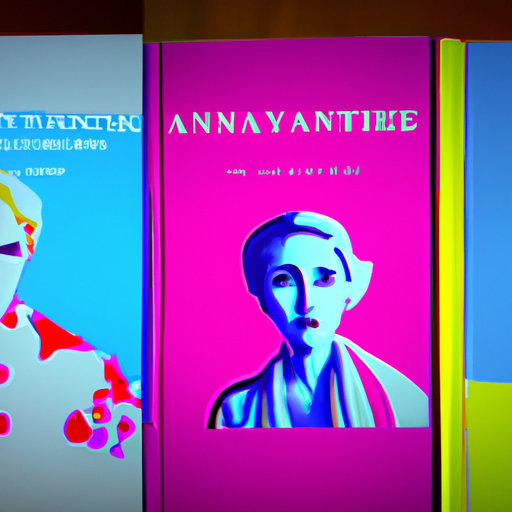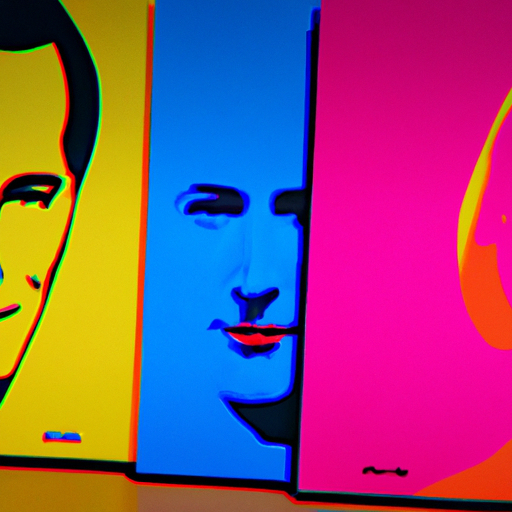
-
Table of Contents
- Art and Literature: Book Covers as Visual Masterpieces
- The Power of First Impressions
- The Intersection of Art and Literature
- The Evolution of Book Cover Design
- Case Studies: Memorable Book Covers
- 1. “The Great Gatsby” by F. Scott Fitzgerald
- 2. “A Clockwork Orange” by Anthony Burgess
- 3. “The Catcher in the Rye” by J.D. Salinger
- The Role of Book Covers in Marketing
- The Future of Book Cover Design
- Summary
Art and Literature: Book Covers as Visual Masterpieces

When it comes to books, we often judge them by their covers. A captivating book cover can entice readers, spark curiosity, and even become a work of art in its own right. In this article, we will explore the significance of book covers as visual masterpieces, examining their role in the world of art and literature.
The Power of First Impressions
As the saying goes, “Don’t judge a book by its cover.” However, in reality, we often do just that. Book covers serve as the first point of contact between a reader and a book, and they play a crucial role in capturing the reader’s attention. A well-designed cover can create a lasting impression and make a book stand out among the sea of options on bookstore shelves or online platforms.
Book covers have the power to convey the essence of a story, evoke emotions, and pique the reader’s interest. They serve as a visual representation of the book’s content, setting the tone and creating expectations. A cover that effectively communicates the genre, themes, or atmosphere of a book can attract the right audience and increase its chances of being picked up and read.
The Intersection of Art and Literature
Book covers are a unique form of art that combines visual aesthetics with storytelling. They provide an opportunity for artists and designers to interpret and visually represent the written word. The collaboration between authors, publishers, and artists in creating book covers has resulted in countless visually stunning and thought-provoking designs.
Throughout history, many renowned artists have contributed their talents to book cover design. Salvador Dali, for example, created striking covers for works by authors such as William Shakespeare and Edgar Allan Poe. These covers not only enhanced the visual appeal of the books but also added an additional layer of artistic interpretation to the stories.
Contemporary artists continue to make their mark in the world of book cover design. One notable example is Chip Kidd, a graphic designer known for his iconic covers for books by authors like Haruki Murakami and Michael Crichton. Kidd’s designs often incorporate bold typography, striking imagery, and clever visual metaphors, capturing the essence of the stories within.
The Evolution of Book Cover Design
Book cover design has evolved significantly over time, reflecting changes in artistic trends, technology, and cultural influences. In the early days of book publishing, covers were often simple and utilitarian, primarily serving the purpose of protecting the book’s pages. However, as the publishing industry grew and competition increased, covers became more elaborate and visually appealing.
During the Art Nouveau movement in the late 19th and early 20th centuries, book covers became intricate and ornamental, featuring flowing lines, floral motifs, and vibrant colors. Artists like Aubrey Beardsley and Alphonse Mucha created stunning covers that were works of art in themselves.
In the mid-20th century, the rise of mass-market paperbacks led to a shift in cover design. Publishers began using eye-catching illustrations and bold typography to attract readers in crowded bookstores. This era saw the emergence of iconic cover designs for science fiction and fantasy novels, such as the works of Frank Frazetta and H.R. Giger.
With the advent of digital publishing and e-books, the role of book covers has expanded further. In the digital realm, covers not only need to be visually appealing but also need to stand out in thumbnail size on online platforms. This has led to a renewed focus on bold, minimalist designs that can be easily recognized and understood even at a small scale.
Case Studies: Memorable Book Covers
Let’s take a closer look at some memorable book covers that have become visual masterpieces in their own right:
1. “The Great Gatsby” by F. Scott Fitzgerald
The cover of “The Great Gatsby” has become an iconic image in American literature. Designed by Francis Cugat, the cover features a pair of eyes floating above a cityscape, capturing the essence of the novel’s themes of wealth, decadence, and the pursuit of the American Dream. The cover has become synonymous with the book and has been reproduced in various forms over the years.
2. “A Clockwork Orange” by Anthony Burgess
The cover of “A Clockwork Orange” is a striking example of minimalist design with a powerful impact. Designed by David Pelham, the cover features a single eye with a mechanical cog as the iris, symbolizing the loss of humanity and free will depicted in the novel. The cover’s bold imagery and use of contrasting colors make it instantly recognizable and visually arresting.
3. “The Catcher in the Rye” by J.D. Salinger
The cover of “The Catcher in the Rye” is a simple yet evocative design that has become synonymous with the novel. Designed by E. Michael Mitchell, the cover features a red carousel horse against a black background, representing the protagonist’s longing for innocence and his struggle to navigate the complexities of adulthood. The cover’s minimalistic approach effectively captures the essence of the story.
The Role of Book Covers in Marketing
Book covers not only serve as visual masterpieces but also play a crucial role in marketing and selling books. In a crowded marketplace, a well-designed cover can make a book stand out and attract potential readers. Publishers invest significant time and resources in creating covers that will appeal to the target audience and increase the book’s marketability.
Research has shown that book covers significantly influence purchasing decisions. According to a study conducted by the Codex Group, 79% of book buyers say that the book cover plays a decisive role in their purchasing decision. Additionally, 52% of readers say that they have bought a book solely because they liked the cover.
Book covers are not only important for physical books but also for e-books. In the digital realm, where books are often displayed as thumbnail images, covers need to be eye-catching and instantly recognizable. According to a study by Smashwords, books with professionally designed covers sell more copies than those with amateur or self-designed covers.
The Future of Book Cover Design
As technology continues to advance and the publishing industry evolves, the future of book cover design holds exciting possibilities. With the rise of augmented reality (AR) and virtual reality (VR), book covers could become interactive and immersive experiences, allowing readers to explore the world of the book before even opening it.
Advancements in printing techniques and materials may also lead to more innovative and tactile book covers. For example, covers with embossed textures, metallic finishes, or even scented elements could enhance the sensory experience of reading and make books even more enticing to readers.
Summary
Book covers are not merely a protective layer for the pages within; they are visual masterpieces that capture the essence of a book
